PROGRAMME NOTES
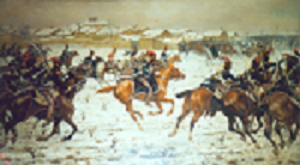
Franz von Suppe (transcribed by Thomas Wakefield)
Overture: The Light Cavalry
It was as a composer of light operetta that Franz von Suppe found his niche in the musical world but his emotional range was wide and his orchestration vivid and colourful. The Light Cavalry Overture describes a squadron of hussars advancing across the Hungarian plane, the final cavalcade brilliantly scored for a brace of cornets. While transcribing this piece for the piano I seemed to live in a long-forgotten world of gallantry and knight-errantry - swashbuckling and endlessly alluring.
Beethoven: Sonata No 21 in C major op 53 “The Walstein”
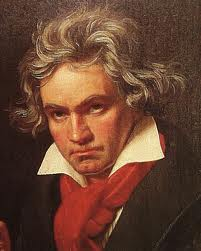
Beethoven composed the Walstein Sonata in 1804. He was working simultaneously on the Eroica Symphony and the first version of Fidelio, and a vein of idealistic humanitarianism imbues all three works. Within the thirty-two sonatas, opus 53 marks a noticeable change of style: Beethoven's so-called “middle period” has now been entered in earnest.A greater richness of texture is apparent and the crackle of wit and epigram subsumed into more spacious structures.
Is this to say that beethoven had mellowed? Far from it. For example: the first thirteen-bar stanza closes so strongly in C minor that resumption in C major sounds vaguely troubling due to the E/E flat false relationship.But this typical Beethoven joke is capped in the recapitulation. When as we return to the same phrase and brace ourselves again for the 'wrong' modality (minor opposed to major), Beethoven goes one better and drops us in the wrong key! We then spiral back to C major via the relative major of C minor and all becomes clear, but a kind of mental flash-back has been cleverly engendered which girds more strongly together this enormous essay in sonata form.
Count Waldstein, friend and patron of the composer and a keen amateur musician, must have found the Rondo a stern test of the ducal virtuosity.Advances in piano manufacture enabled Beethoven to 'orchestrate' his ideas as never before. Notice the revolutionary pedal effects that merge tonic and dominant harmonies over long pedal-points. Sadly the octave glissandi are not an attractive option on the modern pianoforte, but the Waldstein remains a firm favourite due to its noble structure, exuberant brilliance and glorious melodic invention.
Gershwin: Three Studies
Gershwin's music is so American and evocative of carefree New York opulence that it comes as a surprise to learn that his father was Jewish-Ukranian, his mother was Russian and he only lived to the age of 38.
The opulance part holds true, however. Ever eager to improve he contacted Ravel and asked how much he would charge for composition lessons. The latter asked Gershwin how much he was earning. Gershwin offered a conservative estimate. “You don't need composition lessons”, came the reply.
INTERVAL
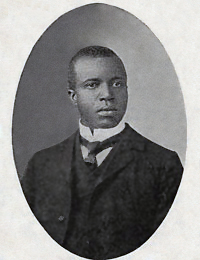
Scott Joplin: Selection of Ragtimes
During the second half of the nineteenth century, African music re-surfaced in North America after years of suppression. Its popularity spread like wildfire. Vocal and instrumental music took off in different directions at first. Slave songs from the plantations developed into spirituals, which in turn led to the blues, while the off-beat style of banjo players turned into the cakewalk and then to ragtime (which consists of a 'ragged' or syncopated melody set against a walking bass line recalling marches, polkas, marching bands and so on). Scott Joplin (1869-1917), an Arkansas Negro, perfected this style at the turn of the (previous) century and when he died, the fusion of ragtime and blues gave birth to the beginnings of jazz.
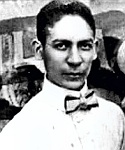
Jelly Roll Morton: Two Pieces
- Black Bottom Stomp
- Transformation of “Miserare” form Verdi's “Il Travatore”
Louis Moreau Gottschalk: Transcription of “Misesrare” from
Verdi's “Il Travatore”
It is interesting to compare Jelly Roll Morton's Transformation of “Miserare” from Verdi's “Il Travatore” with Louis Moreau Gottschalk's treatment of the same material. Both pianists were fascinated by the Creole music of New Orleans despite being separated in time by a good half century. Jelly Roll Morton (1890-1941) claimed to have invented jazz, but what Louis Moreau Gottschalk (1829-1869) would have thought of this we can only imagine. In compositions like La Bamboula he'd anticipated Scott Joplin and the beginnings of rag-time by a good fifty years!
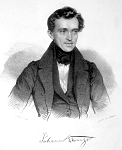
Strauss/Schulz-Evler: Concert Arabeques on “The Beautiful Blue Danube”
Variously known as Adolf or Andrey Schulz-Evler (1852-1905), this Polish-born pianist and composer studied first at the Warsaw Conservatory and then in Berlin under fellow-Pole Karl Tausig. Considered Liszt's most brilliant pupil, Tausig's output ranged from original compositions and operatic paraphrases to attractive re-workings of waltzes by Johann Strauss, so it is interesting that Schulz Evler should turn to this form in what was to become his most famous piece. For a time his Concert Arabesques on the Beautiful Blue Danube enjoyed more popularity than the original due to Joseph Lhevinne's extrordinary performance captured on piano roll. As for those who say the piano roll plays too quickly and such pianistic feats are impossible, they should simply listen to his 78 rpm recording!